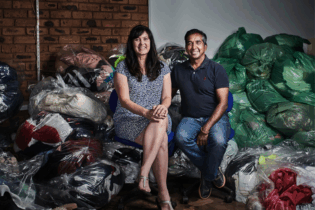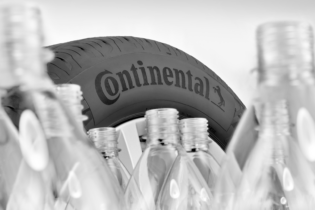Lexmark South Africa’s has a zero-to-landfill company policy. This includes reducing waste that goes to landfill as well as targeting a 100% recycling rate of the components of all printer cartridges sold. The company’s ‘Recycling Initiative for Babies’ (Crib) for Cotlands, forms part of this initiative and not only helps children in need, but also protects the environment.
According toMark Hiller, the country general manager of Lexmark, the printing industry has a unique responsibility to ensure that the millions of consumable items discarded every year donot end up in landfill sites, or pollute the environment. Printer cartridges, along with a host of other electronic waste, are considered hazardous, referred to as e-waste, due to the presence of many toxic substances which not only pollute soils but air as well. Lexmark has established a partnership with Cotlands and helps to raise much-needed funds so as to contribute towards the daily costs of caring for the children. The company recovers used inkjet cartridges and laser toner. These are recycled and the financial return is paid to the charity in the form of ‘baby days’. One baby day equals the cost of housing, feeding, clothing and medical care for one child at Cotlands for the period of one day. The financial contribution equates to a certain number of cartridges returned.Over the past 11 years, Lexmark has raised R4.5million (US$518 000) for Cotlands, and they have sponsored 87 000 baby days. Since the inception of this recycling project, about 200 tonnes of discarded printing consumables were diverted from landfills and was recycled instead. The company has also changed the composition of its plastic to use more recycled materials.For increased participation by clients, the programme was designed in such a way that it is easy for consumers to recycle empty cartridges.For clients using a large number of laser or inkjet cartridges, bulk collection boxes are placed on site and removed at no charge once they are full, making it convenient for businesses to participate. A centralised collection service also reduces the amount of transport needed to dispose of the cartridges.
“Interest from corporate clients is increasing, and the boxes remove the logistical hurdles to return cartridges,” Hiller says. For home users who perhaps only buy one cartridge at a time, Lexmark includes an envelope inside all inkjet boxes that enables consumers to send back their empty cartridge, via free post.Thanks to the programme, Lexmark has successfully increased the percentage of laser empties collected each year, and they’ve noticed that more corporates are participating in the initiative. Once the cartridges are collected and sorted, they are shipped to a specialised recycling plant in eastern Europe, where the different grades of plastic are sorted, ferrous and non-ferrous metals are separated, and toxic materials are removed.In the process, moving parts which can be re-used, such as springs, are recovered.






